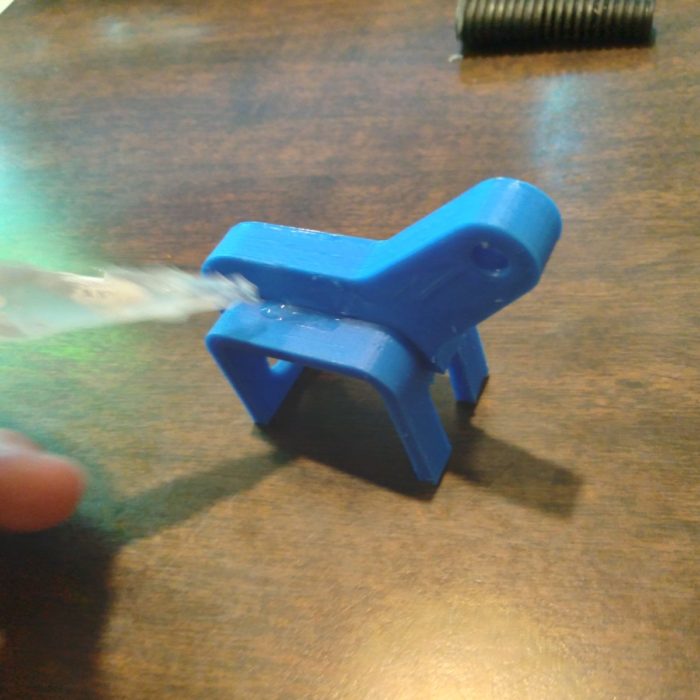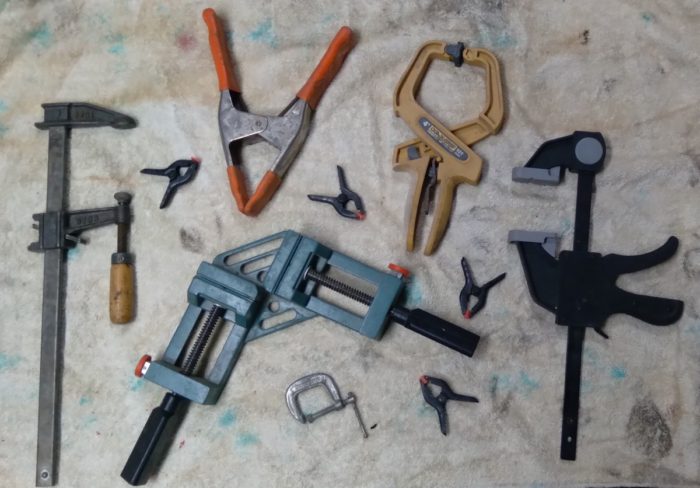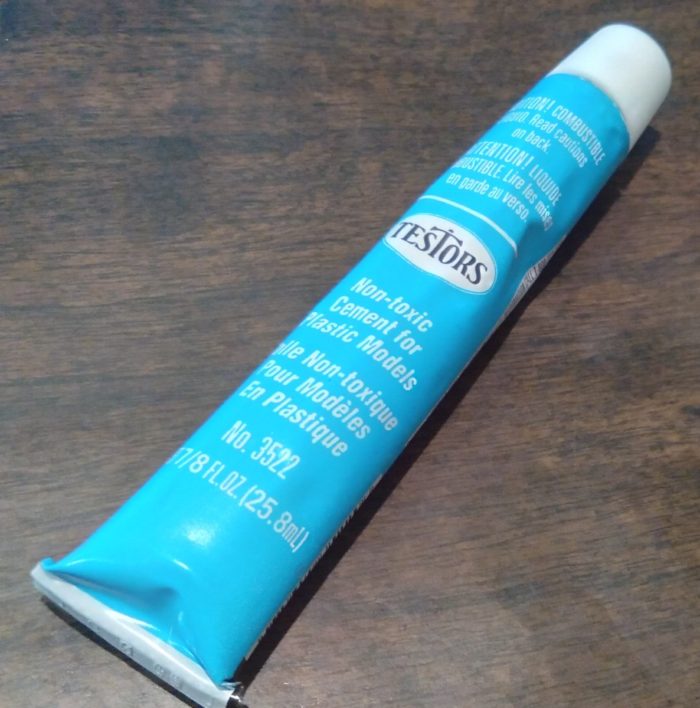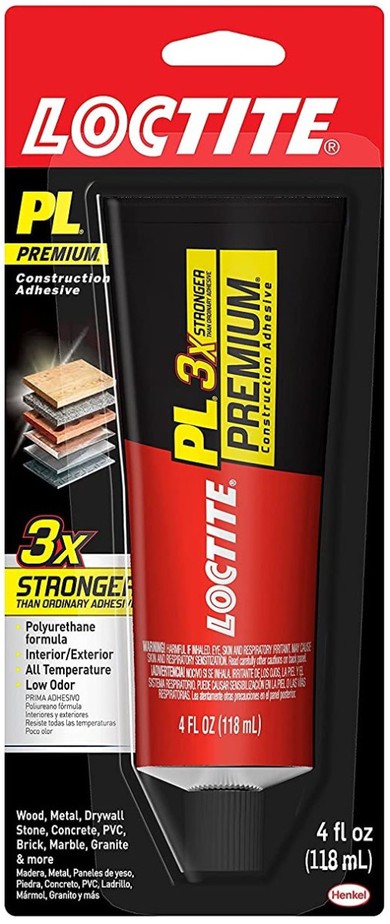I was getting frustrated! This was the third time I was attempting to super glue my 3D printed prototype together and the glue just wasn’t holding. In my younger years, I would have already smashed the parts and started over. Thankfully I’m wiser than that now.
Super Glue (Cyanoacrylate) may not bond on smooth, non-porous surfaces like plastic. Roughing up surfaces with 100 to 220 grit sandpaper will create spaces for the glue to adhere. Planning out how the components will be clamped together will improve the likelyhood the glue will hold.

Let’s dive deeper into why the glue isn’t bonding.
How Super Glue Works
Super glue works on the “lock and key” method, where the glue will seep into all the cracks and crevices in the materials. At this point, solvent evaporation occurs and solidifies forming the strong bond we know and love. The final structure is a very strong mesh.

How to Get a Strong Bond
As you can imagine, super glue will work very well on materials like wood and ceramics because they have lots of small cracks in them that the glue can adhere to easily. However, when it comes to smooth surfaces like plastic, metal and glass, there are not many cracks to seep into and there will be little to no bond.
The way to solve this is to create some cracks for the glue to fill. Sand paper is one of the easiest ways to do this. I recommend sandpaper from 120 grit to 220 grit. Anything rougher might leave extra cracks that are hard to fill or smooth out. Smoother sandpapers don’t create cracks large enough to perform the strong bond we need.
If the area to be bonded is very delicate or hard to reach, using a small file set will do the trick.
Be sure to clean the surfaces before applying the glue.

Improve Clamping
Even if your surfaces have been roughed up, special attention needs to be placed on how the components are going to be clamped together. Often we think that just holding them for a minute will be enough. As long as we have a steady hand, this does work most times.
If you are going to try to clamp it yourself, be sure to count slowly to at least 60 if not 90. This is a LONG time when you are holding the items and pressing them together. Once you release, you need to put the object in a position that will not put any stress on the joint for at least another 10 minutes. Wait at least 24 hours before putting loads on them.
I highly recommend clamping the items using a third hand. The third hand has alligator clips that can be maneuvered into place after the glue is applied to each part. You will probably want to hold the pieces together for 60 seconds, but once you remove your hands, the piece should stay in place.
If your components are large and heavy, you will need something more substantial. At this point, I would look to clamps. They come in a variety of shapes and sizes (see above). You are sure to find one that will suit your needs. As somebody who owns over 2 dozen different clamps, you will not regret this investment. You will find you use them time and again wondering how you ever did without them.

Alternative Adhesives
Acrylic Plastic Cement
Used on plastics, this glue is high strength. Unlike super glue that will fill voids, this glue will actually dissolve the surface the adhesive is applied to and “weld” the parts together chemically. You may not want to use plastic cement on small or delicate parts because it dissolves the plastics. On 3D models you may lose details or surface finish using this glue.
This glue is very thin, but can be thickened up by dissolving very small pieces of PLA plastic into the glue. This will make it easier to spread on the surfaces.
I also recommend using a small brush to apply the adhesive. This will control the applied thickness, giving a consistent bond with very little extra squeezed out.

The glue is fast setting and will give full strength in just a few hours.
Urethane Glue
Urethane glues are readily available as construction adhesives, but not very common for use with small parts. They have very good strength which is able to be used in heavy duty applications; however, they can take up to a week to fully cure.
These types of adhesives are used in construction and auto glass installations. This adhesive can be used on smooth surfaces, like glass, an it is flexible in nature. The flexibility can be both a good and bad thing. If you are looking for weather sealing, this would be a good product. If you are making models, this may not be what you are looking for.
Epoxy Resin
Epoxy resins use a resin and a hardener that are inert separately, but when mixed they form a very strong adhesive. They are strong because the epoxy works with the material surface energy which is a naturally occurring phenomenon. As long as the epoxy has a lower surface energy than the material to be bonded, it will be attracted to it and create a strong bond. If the epoxy beads up, this is a sign that the surface energy is less than that of the epoxy and bonding will be poor.
Epoxy resins will work well with inorganic materials like metals, glass, ceramics and minerals because those materials will have high surface energy. Organic materials are less likely to form a strong bond, but many do. When buying an adhesive, make sure that look for the materials that it will work well with.
Conclusions
If you are having trouble with super glue bonding, first make sure that your parts are rough. If not, rough them up with some sand paper or a file. Also, make sure that your glue is advertised as a good choice for your application. Certain type of materials, especially plastics, won’t work with all adhesives.

